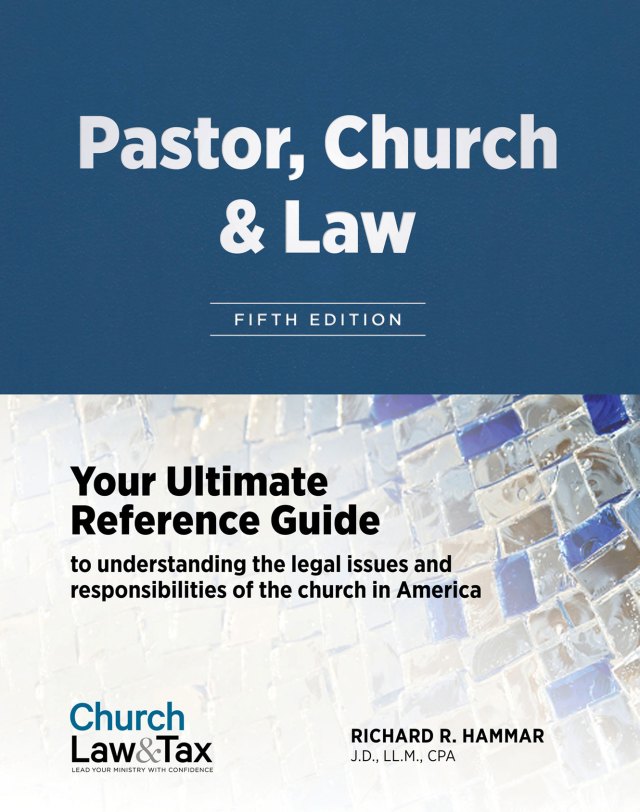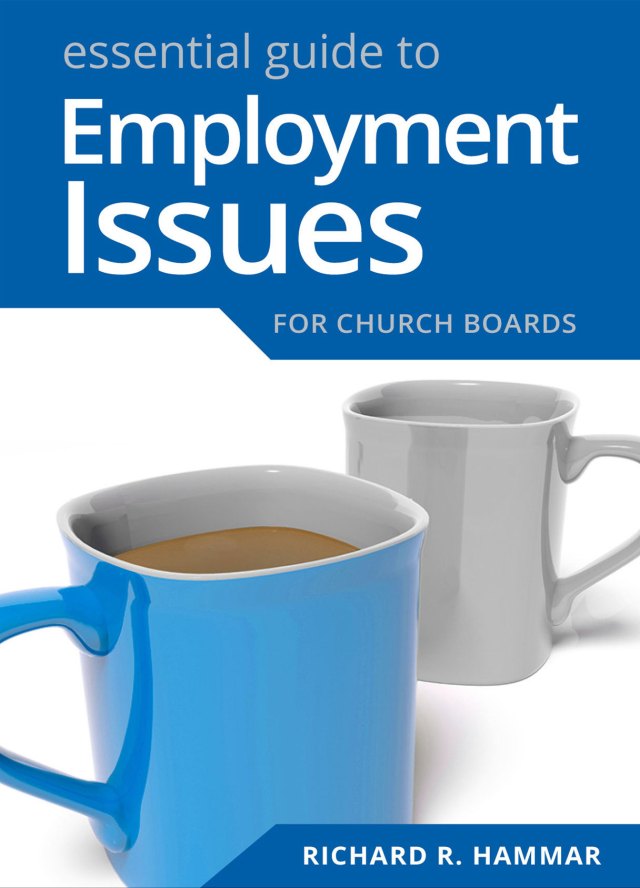Key point 8-10.2. Some courts have not recognized the ministerial exception, usually because the complainant was not a minister in either status or function, or was employed by a secular organization.
Key point 8-11. Employees and applicants for employment who believe that an employer has violated a federal civil rights law must pursue their claim according to a specific procedure. Failure to do so will result in the dismissal of their claim.
Key point 8-12.1. Title VII of the Civil Rights Act of 1964 prohibits employers engaged in commerce and having at least 15 employees from discriminating in any employment decision on the basis of race, color, national origin, gender, or religion. Religious organizations are exempt from the ban on religious discrimination, but not from the other prohibited forms of discrimination.
Key point 8-13. The federal Age Discrimination in Employment Act prohibits employers with 20 or more employees, and engaged in interstate commerce, from discriminating in any employment decision on the basis of the age of an employee or applicant for employment who is 40 years of age or older. The Act does not exempt religious organizations. Many states have similar laws that often apply to employers having fewer than twenty employees.
A federal district court in Oklahoma ruled that a Roman Catholic parochial school was exempt from Title VII’s ban on religious discrimination in employment decisions; that the “ministerial exception” did not apply to a teacher employed by the parochial school; and, that the school did not violate age discrimination law in not renewing her contract. A parochial school employed a teacher (the “plaintiff”) for a one-year, renewable contract. Her contract was renewed each year for 10 years. During the 10th year, the school informed the plaintiff that her contract would not be renewed. She was 63 years old at that time. The plaintiff sued the school and church (the “defendants”) for unlawful employment discrimination based on religion and age.
religious discrimination
The plaintiff asserted that the defendants terminated her because she was an Episcopalian, and not a Catholic, in violation of the ban on religious discrimination under Title VII of the Civil Rights Act of 1964. The defendants noted that Title VII exempts religious organizations from the ban on religious discrimination in employment. Title VII provides: “This subchapter shall not apply … to a religious corporation, association, educational institution, or society with respect to the employment of individuals of a particular religion to perform work connected with the carrying on by such corporation, association, educational institution, or society of its activities.”
The court dismissed the plaintiff’s religious discrimination claim based on Title VII’s exemption of religious organizations from the ban on religious discrimination. It observed: “Because the exemption applies to employees with religious or secular duties, the court need not determine whether [the plaintiff’s] duties were religious.”
The court also rejected the plaintiff’s argument that the defendant school was not a “religious” organization. It quoted from a 2007 federal appeals court decision:
Over the years, courts have looked at the following factors [in determining if an employer qualifies as a religious organization]: (1) whether the entity operates for a profit, (2) whether it produces a secular product, (3) whether the entity’s articles of incorporation or other pertinent documents state a religious purpose, (4) whether it is owned, affiliated with or financially supported by a formally religious entity such as a church or synagogue, (5) whether a formally religious entity participates in the management, for instance by having representatives on the board of trustees, (6) whether the entity holds itself out to the public as secular or sectarian, (7) whether the entity regularly includes prayer or other forms of worship in its activities, (8) whether it includes religious instruction in its curriculum, to the extent it is an educational institution, and (9) whether its membership is made up by coreligionists …. Not all factors will be relevant in all cases, and the weight given each factor may vary from case to case. LeBoon v. Lancaster Jewish Community Center, 503 F.3d 217 (3rd Cir.2007).
The court concluded that the defendant school was a religious organization under this test. It noted that the school was operated by a church organized under the Canon Law of the Roman Catholic Church; that the school taught many secular subjects, but also required religious instruction for all students; that the church’s pastor supervises some school decisions, such as whether or not to renew teachers’ contracts; and the school’s student handbook describes the school as “first and foremost a Catholic school [that] embraces the Catholic traditions of mass, personal prayer and stewardship.”
the ministerial exception
The court rejected the defendants’ claim that the plaintiff’s entire case had to be dismissed as a result of the “ministerial exception,” which bars civil courts from interfering with employment disputes between churches and ministers. While the United States Supreme Court affirmed the ministerial exception earlier this year (see the Feature Article in the March/April 2012 edition of CHURCH LAW & TAX REPORT), it left undefined the term “minister.”
The federal court in Oklahoma concluded that the plaintiff, a fifth-grade teacher in a parochial school, was not a minister for purposes of the ministerial exception. The court applied the most commonly used definition of “minister” in applying the ministerial exception: “As a general rule, if the employee’s primary duties consist of teaching, spreading the faith, church governance, supervision of a religious order, or supervision or participation in religious ritual and worship, he or she should be considered ‘clergy.'” Rayburn v. Gen. Conf. of Seventh-Day Adventists, 772 F.2d 1164 (4th Cir.1985).
The court noted that several courts have concluded that the ministerial exception applies to principals of parochial schools. But, on the other hand, “the overwhelming majority of courts that have considered the issue have held that parochial school teachers … who teach primarily secular subjects, do not classify as ministerial employees for purposes of the exception.”
The court added:
It is difficult to conceive that [the plaintiff] might properly be classified as a minister of the Catholic faith when she is not even a member of that faith.” Further, “although her teaching contract required her to teach and act in accordance with the precepts of the Catholic Church and aid in the Christian formation of students, defendants have not articulated specific responsibilities or actions that might be considered ministerial …. [Her] position as a teacher of secular subjects [does not] qualify her for the ministerial exception. She did not teach religion or lead the students in prayer, and she is not Catholic.
age discrimination
The court rejected the plaintiff’s age discrimination claim on the basis of five performance-related incidents that formed the basis for nonrenewal of her teaching contract. Generally, if an employer in an employment discrimination case is able to articulate a nondiscriminatory reason for an adverse employment decision, the burden of proof shifts to the employee to prove that the employer’s reason was “pretextual.” An employee generally shows pretext with evidence that the employer’s stated reason for the adverse employment action was false. The court concluded that the plaintiff had failed to produce any evidence that the defendants’ nondiscriminatory basis for not renewing her contract was pretextual.
The court also noted that the school’s decision not to renew the plaintiff’s contract “benefits from a strong inference that the decision was not pretextual under the ‘same actor’ inference.” It explained: “Where the employee was hired and fired by the same person within a relatively short time span, there is a strong inference that the employer’s stated reason for acting against the employee is not pretextual …. The same actor inference has been applied when the hiring and firing occurred up to four years apart.” The court noted that the parish priest had signed some of the plaintiff’s recent contracts, and also made the final decision to terminate. Since these two acts were relatively close in proximity, a “strong inference” arose that the defendants’ nondiscriminatory reason for not renewing the contract was not pretextual.
What This Means For Churches:
This case is important for the following reasons:
1. Many church leaders are unaware that Title VII’s ban on religious discrimination in employment decisions applies to both religious and “secular” positions in a church. This court explicitly acknowledged that the church and school were allowed to discriminate on the basis of religion in terminating the plaintiff, even if her position as a teacher was deemed to be “secular.”
2. Title VII’s exemption of religious employers from the ban on religious discrimination in employment decisions applies to “a religious corporation, association, educational institution, or society with respect to the employment of individuals of a particular religion to perform work connected with the carrying on by such corporation, association, educational institution, or society of its activities.” The court provided an excellent nine-factor test to be used in deciding if an employer is a religious employer exempt from the ban on religious discrimination.
3. Only employers with at least 15 employees, and engaged in interstate commerce, are subject to Title VII. Most churches have fewer than 15 employees, and are not covered by Title VII. However, most states have enacted employment discrimination laws that are more likely to apply to churches since they have no interstate commerce requirement and often apply to employers with fewer than 15 employees.
4. The court applied the so-called “same actor” inference. This principle, which has been applied by many courts, raises an inference that if the same person makes an adverse employment decision soon after (up to four years, according to one court) a decision to hire the person, an allegedly nondiscriminatory reason for the adverse decision is not pretextual. This is an important inference for church leaders to bear in mind. However, note that the court cautioned that “the same actor evidence gives rise to an inference, rather than a presumption, that no discriminatory animus motivated the employer’s actions.” Braun v. St. Pius X Parish, 2011 WL 5086362 (N.D. Okla.2011).
This Recent Development first appeared in Church Law and Tax Report, September/October 2012.



